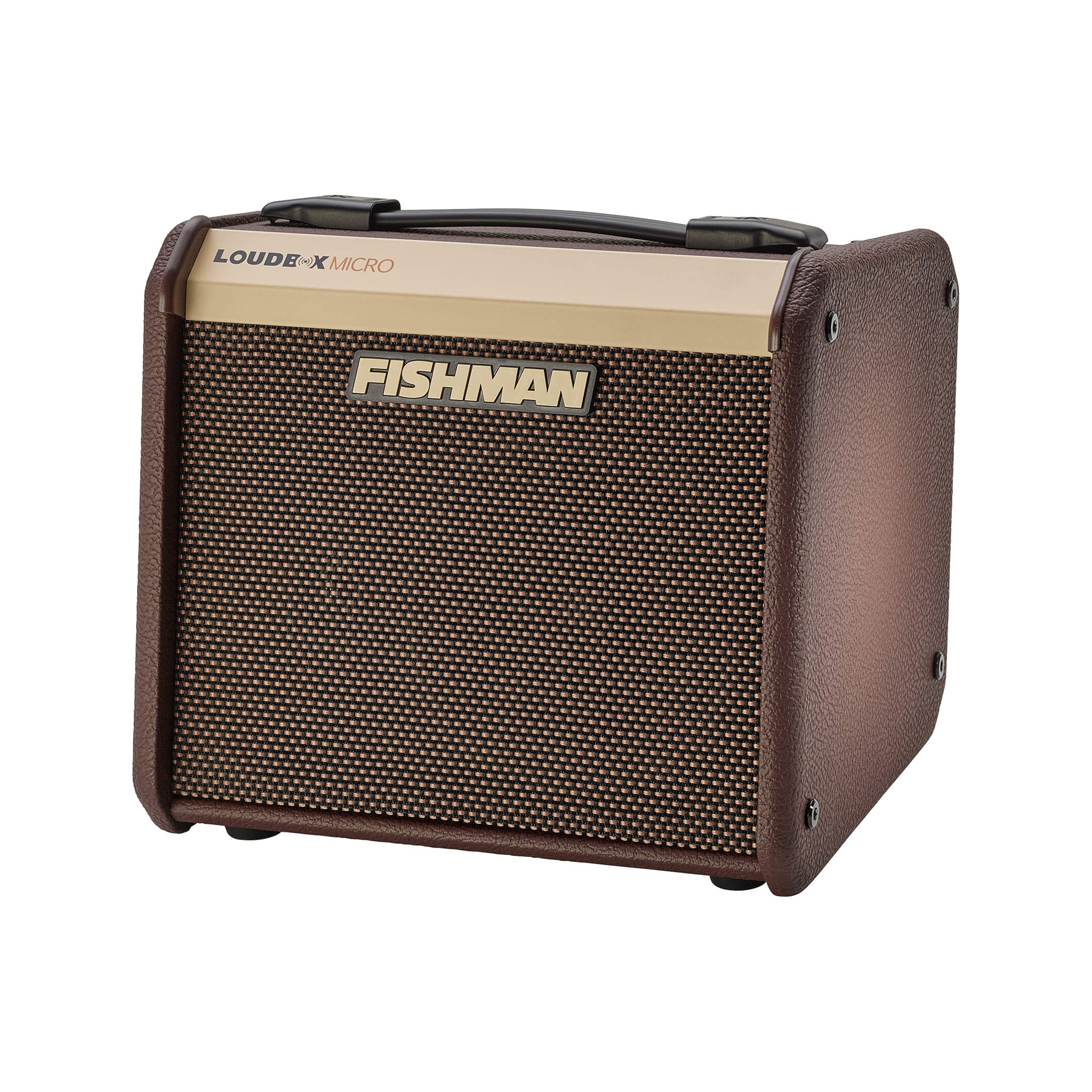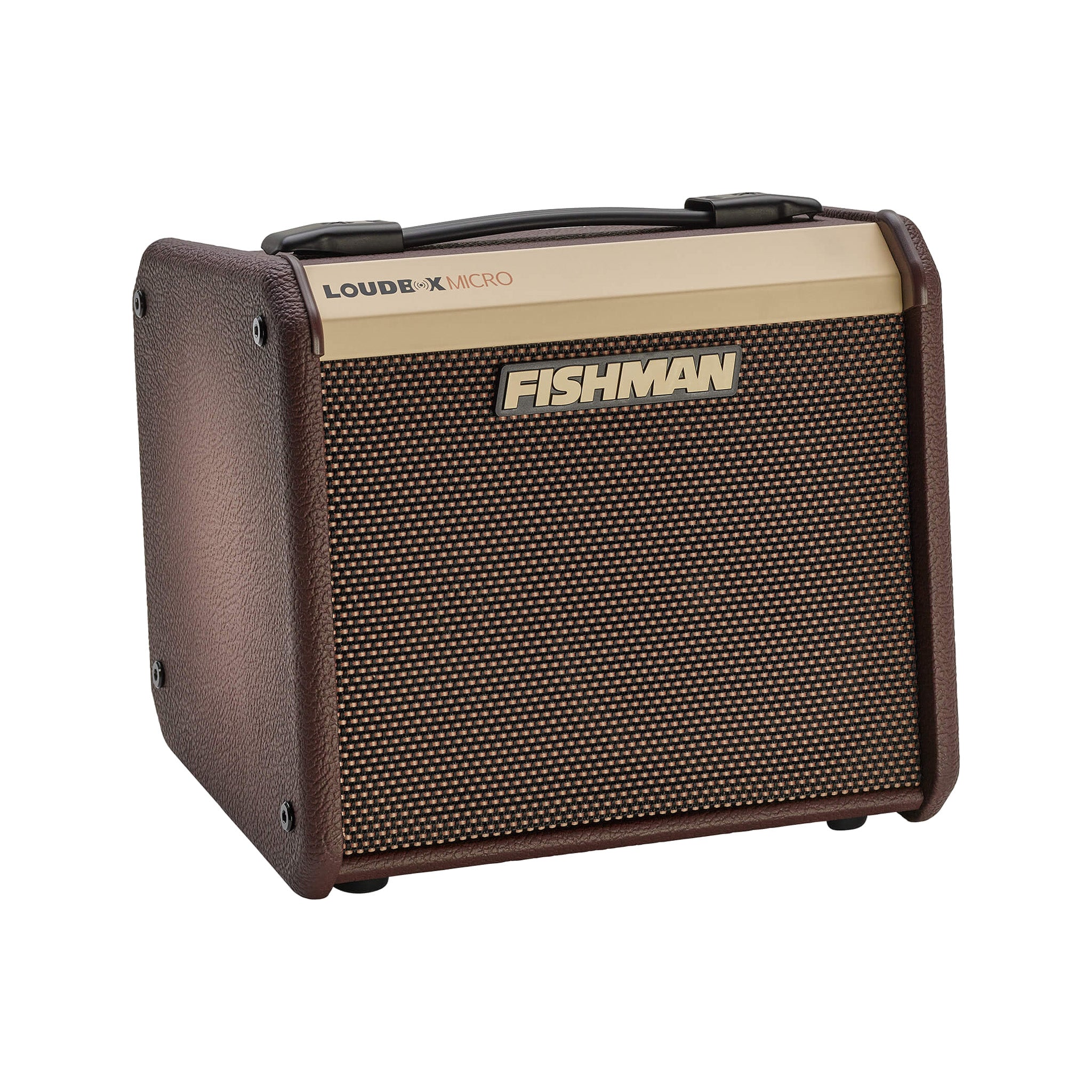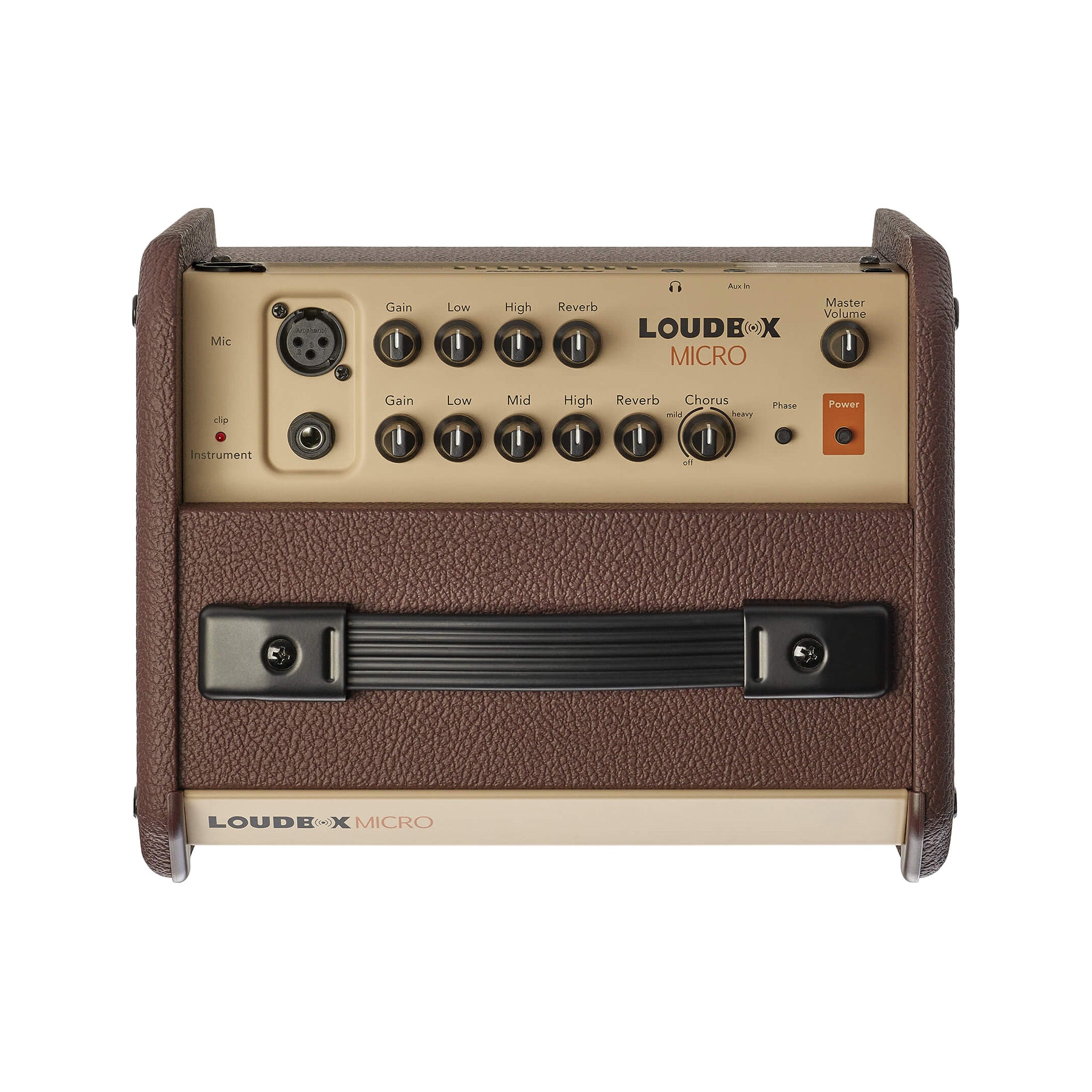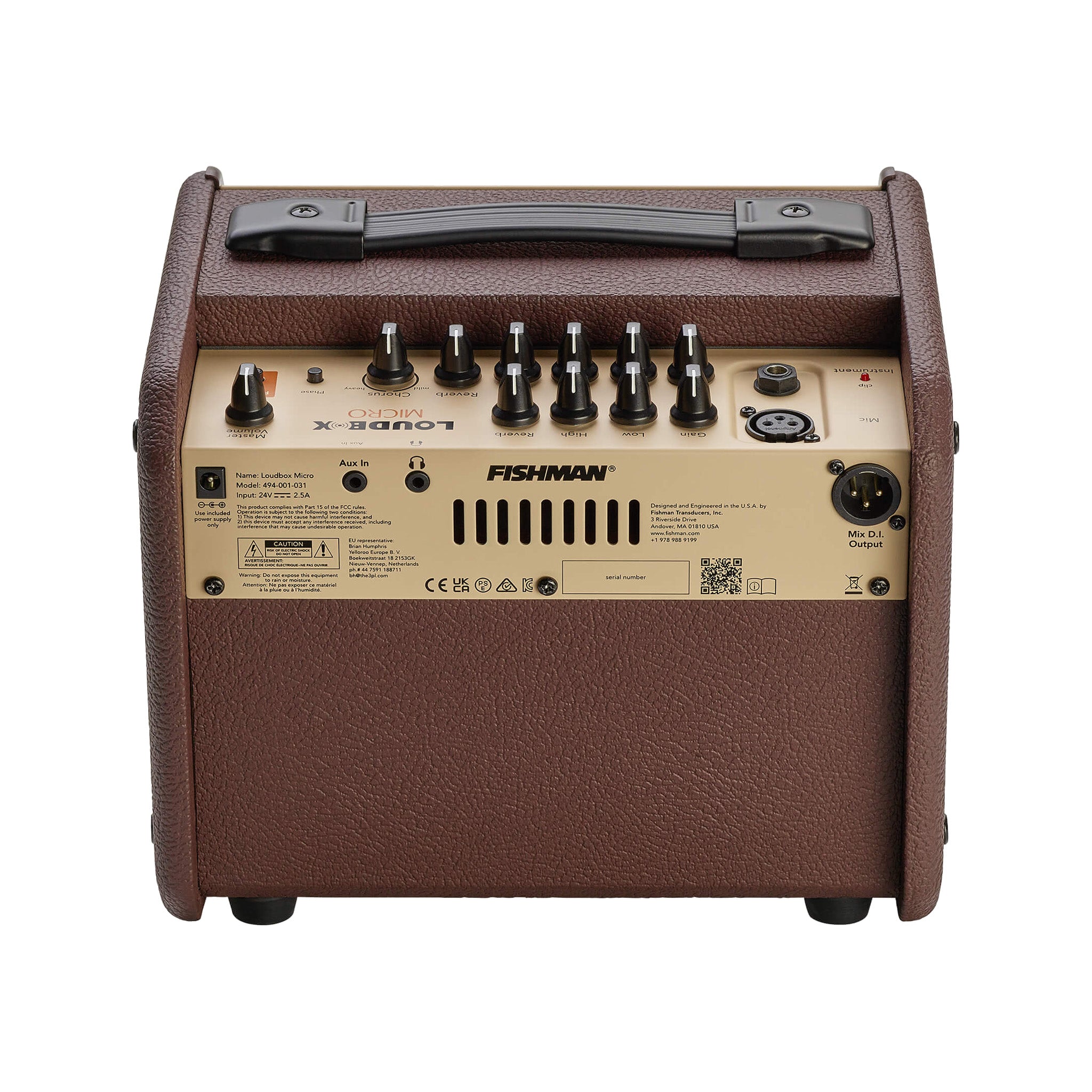The Loudbox Micro is a remarkable acoustic guitar amplifier that packs 40 watts of clean acoustic power into a compact lunchbox-sized combo. Its sealed cabinet design, combined with a bi - amplified driver configuration, produces rich and full tones from your acoustic instruments. It features a dedicated microphone channel and an instrument channel with Fishman's well - known preamp and tone control design. On the instrument channel, you can use the high - quality digital reverb and chorus to add space and texture, while the reverb is readily available on the microphone channel. The Loudbox Micro also comes with an aux input, a balanced XLR D.I. output, and a headphone jack for quiet practice. Aspiring acoustic musicians can now experience the dynamics and sound quality of more expensive Loudbox models in an easy - to - use amp that's great for practice and recording. Check out our video here: https://youtu.be/gjkg9TPGE00. Features include 40 Watts with Master Volume, two channels (Instrument & Microphone), Digital Reverb & Chorus, 1/8” Auxiliary Input, Balanced XLR D.I. Output, 3.5mm Headphone Output, 1/4” input for active or passive pickups, a Feedback - fighting Phase switch, 3 - band EQ for tone control, Reverb level adjustment, Dual - function Chorus, XLR input for dynamic microphones, and 2 - band EQ with low and high tone controls. Specifications are as follows: Power is 40W, Bi - Amplified. It has two channels: Instrument & Microphone. The drivers are a 5.25' Poly Cone Woofer and a 0.8' Soft Dome Tweeter. Effects include Reverb and Dual - Function Chorus. There's a 3.5mm Aux Input, and outputs are a Balanced XLR D.I. Output and a 3.5mm Headphone Output. Dimensions are 9.1” (D) x 10.4” (W) x 9.5” (H) / 206mm (D) x 264mm (W) x 242mm (H), and it weighs 4.1 kg / 9.1 lbs.





Using the Fishman Loudbox Micro amplifier is a breeze. First, connect your acoustic guitar to the instrument channel using the 1/4” input. If you're using a dynamic microphone, plug it into the XLR input on the microphone channel. For external audio sources like a phone or MP3 player, use the 3.5mm aux input. Adjust the master volume to your desired level. You can fine - tune the sound with the 3 - band EQ on the instrument channel and the 2 - band EQ on the microphone channel. To add some effects, play around with the digital reverb and chorus controls. When you want to practice quietly, plug your headphones into the 3.5mm headphone output. As for maintenance, keep the amplifier in a dry and clean place. Avoid exposing it to extreme temperatures or humidity. Wipe it down gently with a dry cloth regularly. If you notice any issues with the sound or any components, stop using it and contact a professional for repair.